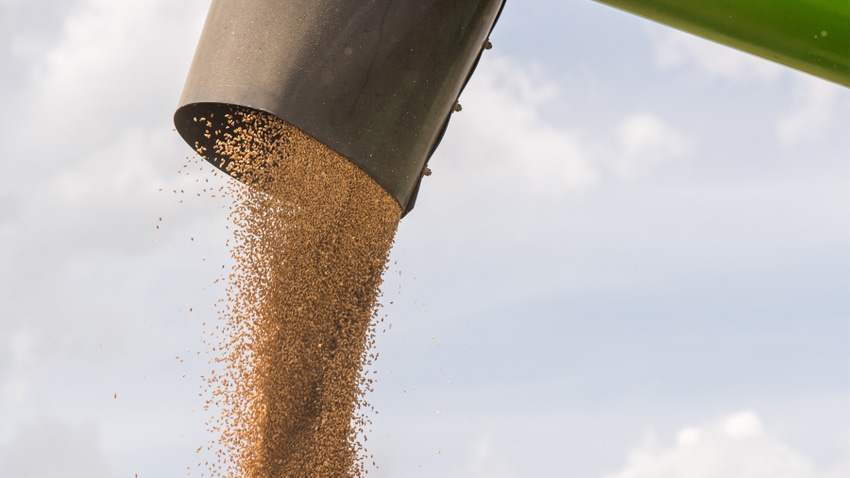
Six weeks. That’s how long Kansas wheat farmers have been trying to get the 2023 winter wheat crop harvested.
At just 71% complete, according to the USDA National Agricultural Statistics Service Crop Progress Report of July 16, this year’s wheat harvest is well behind the five-year average of 94%. To put it in perspective, as Kansas Wheat reports: In the far southwestern corner of the state, they’re usually wrapping up the last rounds of wheat harvest by the time the fireworks fly for July 4.
This year, according to Morgan Walls of Elkhart Co-op, the first loads of Morton County, Kan., wheat crossed the scales July 4. The area was already facing 70% to 75% of its planted acres being zeroed out by crop insurance. But then, Mother Nature threw hail at the remaining acres in the first few weeks of July, and that hurt farmers even more. Walls reported to Kansas Wheat that test weights were averaging lighter than they’d prefer, at about 58 pounds per bushel, with protein at 12% to 14%.
“Yields are all over the place — from 5 bushels an acre all the way up to a very small area that had timely moisture and is seeing averages around 70 bushels per acre,” he reports.
The rains have brought heavy flushes of weeds in fields that were deemed harvestable by crop insurance. With sparse stands, the timely rains not only filled some wheat heads, but also mean farmers and elevators have to contend with foreign material possibly running through the combine and the elevator.
Another complication? The impending corn harvest.
Dave Strecker, with Alliance Ag and Grain LLC, Fowler, Kan., reports that the last bits of wheat are coming in, and corn is now tasseling. He estimates that the first load of dryland corn may very well arrive in five weeks — or the middle of August. That’s not a lot of time, Kansas Wheat reports, to turn house and prepare for that fall crop to come in.
Northwest Kansas
Variation is the theme of the 2023 harvest in the west-central and northwest parts of Kansas.
In Wichita County, Kan., Brinlee McNary, grain merchandiser for Scott Coop, reports that timely spring rains helped add yield to those sparse stands they saw in May — with yields ranging from 20 to 70 bushels per acre. However, as the rains continued through July, they affected test weights, dropping them now down to 58 pounds per bushel.
Brian Linin, a farmer near Goodland, Kan., in Sherman County, says his irrigated wheat is yielding a surprising 60 to 65 bushels per acre, with his dryland wheat yielding 50 to 60 bushels per acre. That range is wider due to variation between heads that are not quite ripe and others that are overripe, he says. He says he found a big benefit from planting wheat into stubble to set up that yield potential.
Over in Colby, Kan., in Thomas County, Eric Sperber of Cornerstone Ag says the first combines finally started rolling July 10 — the latest ever. The wheat in the fields has a large variation of ripening — with original tillers ripening on time but taller secondary tillers taking a few more days to ripen. And then there are “suckerheads” growing even taller and ripening a few days after that, he reports. That variation, with the high humidity, kept farmers out of the fields until long into the afternoon hours.
This on top of poor stands, weeds, winterkill from a snap in December and disease pressure from rust on fields without fungicide, Sperber says, has made this year challenging from planting all the way to harvest.
“It’s been really weird,” he says.
The 2023 Harvest Reports are a collaboration of the Kansas Wheat Commission, Kansas Association of Wheat Growers, Kansas Grain and Feed Association, and the Kansas Cooperative Council. Read more online at kswheat.com.
Kansas Wheat contributed to this article.
About the Author(s)
You May Also Like






